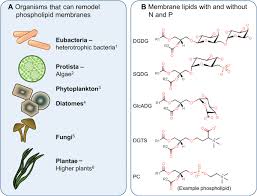Metabolomics, Lipidomics, and Antipsychotics article

The link to the article is here- Metabolomics, Lipidomics, and Antipsychotics: A Systematic Review
Here is my annotations: https://drive.google.com/file/d/1gcPDKPnoFNsahtrZYSU6IdGdodTGFiDQ/view?usp=sharing
Short Summary of the Research
The research is about how antipsychotic medications affect the body’s biochemical makeup, especially metabolites (small molecules involved in metabolism) and lipids (fats). Researchers analyzed data from several studies to find patterns in how these drugs change molecules in the blood and brain. They discovered that antipsychotics often increase phosphatidylcholines (a type of fat molecule in cell membranes) and decrease acylcarnitines and carboxylic acids (compounds important for energy and metabolism). These changes are a way to explain why some patients experience side effects like weight gain or fatigue. The study leans to the statement that by understanding these biochemical shifts, pharmacists and scientists can design safer medications and monitor patients more effectively.
| Word | Meaning |
|---|---|
| Metabolomics | The scientific study of small molecules (metabolites) produced during metabolism. |
| Lipidomics | The study of lipids (fats) in cells and how they change under different conditions. |
| Antipsychotics | Medications used to treat mental disorders like schizophrenia or bipolar disorder. |
| Systematic Review | A research method that collects and analyzes results from many previous studies. |
| Metabolite | A small molecule involved in or produced by chemical reactions inside the body. |
| Phosphatidylcholine | A type of lipid that is a major component of cell membranes. |
| Acylcarnitine | A molecule involved in the breakdown and transport of fatty acids for energy. |
| Carboxylic Acid | A compound found in many biochemical reactions related to metabolism. |
| Biochemical Pathway | A series of chemical reactions that occur within a living organism. |
| Lipid Profile | A measurement of fat-related molecules in the blood. |
Key Points
Purpose: To understand how antipsychotic drugs change the body’s metabolism and lipid balance.
Methods: Researchers reviewed dozens of studies measuring biochemical changes in patients taking antipsychotics.
Findings:
- Increase in phosphatidylcholines (lipid molecules).
- Decrease in acylcarnitines and carboxylic acids, which help produce energy.
- A general pattern showing disruptions in energy metabolism.
My thoughts and implications:
- Explains side effects such as weight gain and fatigue in patients using these medications.
- Could help scientists develop new drugs that reduce harmful metabolic effects.
- Supports pharmacists in using biochemical monitoring to improve patient safety.
My Essay
The study of “Metabolomics, Lipidomics, and Antipsychotics: A Systematic Review” is a look into how biochemical research and pharmacy intersect to improve patient care. This research examines how antipsychotic medications influence the body’s metabolism by analyzing patterns of small molecules which is known as metabolites and lipids. By reviewing multiple studies, the researchers discovered consistent biochemical changes in patients taking antipsychotics.
A big trend was of the levels of phosphatidylcholines, a major component of cell membranes, were found to increase, while molecules such as acylcarnitines and carboxylic acids, which are critical for energy production, tended to decrease. These findings reveal how deeply medications can affect the body’s internal chemistry, sometimes leading to side effects like fatigue or weight gain that patients often experience. What makes this research meaningful to me is how it blends the human side of healthcare with molecular science. I have always been interested in how the smallest biochemical reactions can have a profound impact on a person’s well-being. This study shows that behind every medication and every patient outcome lies a network of complex chemical processes that scientists and pharmacists work to understand. Research like this reminds me that biochemistry is not just about molecules, it is about people. It reflects a commitment to improving lives through science, by uncovering the invisible ways our bodies respond to medicine. As someone passionate about both communication and scientific understanding, I find inspiration in how such studies turn data into empathy-driven innovation, helping bridge the gap between laboratory discovery and patient care.